Espresso Beans vs Coffee Beans: The Ultimate Differences
If you have a basic understanding of coffee, you’ve probably heard of the two big hitters: Espresso and regular coffee beans.
Espresso is often titled as the caffeine powerhouse, and coffee is seen as everything from a daily pick-me-up to an artistic canvas.
Is it really that simple? What are the real differences, though? Why are they considered two completely different experiences?
Well, when it comes to espresso beans vs coffee beans, it turns out that there are actually quite a few substantial differences despite the similarities.
Let’s check it out; you might rethink how you look at coffee by the time we’re done.
What are Coffee Beans?
Coffee beans are the more popular option in day-to-day life. You see them in various grinds, whole beans, roasts, and flavors lining grocery store shelves in big tins and bags almost everywhere. They’re the go-to coffee drink for average people every morning, and they’re what most people think of when getting a premium-quality cup of Joe from a skilled barista.
Coffee beans are usually roasted more lightly, and they have a less overwhelming and robust flavor. This makes them great for more liberal portions such as whole cups of coffee, dusted on deserts, and mixed into various recipes without being too strong.

Coffee beans can be found in a large variety of types. There are various roasts to choose from, though all of them are typically far lighter than espresso, and this changes their flavor profile dramatically. Some manufacturers also combine different varieties of coffee with aromatics and similar ingredients to create flavored coffees that deliver a more exotic experience.
Finally, you can usually find coffee beans in several types of grinds. There are whole beans that you grind yourself or use in recipes as they are, finely ground coffee, coarse ground coffee, concentrated coffee crystals, and even concentrated liquid or powdered coffees you just add to water.
These various types can all be prepared with drip machines, pour-over vessels, cold-brewed, and more; creating a highly flexible, highly-caffeinated product that tastes great without being overwhelming.
What are Espresso Beans?
The main difference with espresso beans is how they’re prepared. They’re roasted extremely dark, and they’re known for having an unbeatably robust flavor profile. To an extent, they’re also known for being a lot stronger in terms of caffeine, but that’s debatable.
Espresso beans are known for their trademark oily sheen and almost black coloring. This is due to the process used to roast them to such incredibly dark levels; the difference that creates every other difference you’ll be reading about, today.
Espresso is most often served in smaller portions compared to coffee because of how robust it can be. Adding a shot or two of espresso to a gelato creates a delicious Italian dessert, or it can be served straight in smaller cups for an unbridled flavor explosion of highly-potent coffee.
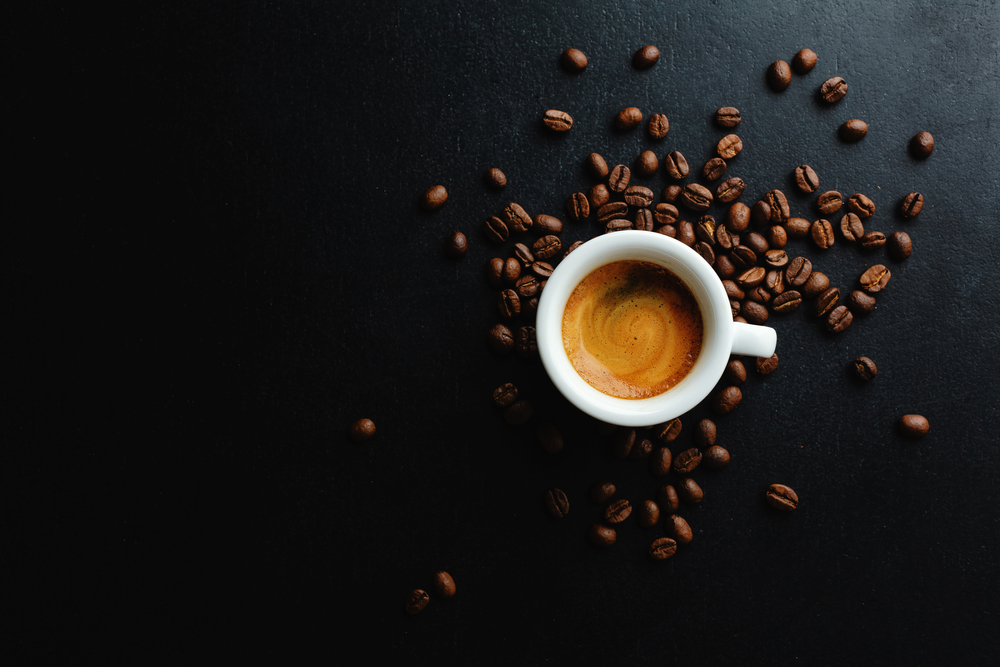
However, your options are more limited when it comes to espresso beans. Traditionally, espresso beans are ground extremely fine. In fact, they’re almost a powder. It’s also a given that they’re roasted to extremely dark levels. So, it’s very difficult to find a “light roast” espresso that’s as accessible as standard coffee. The fine-grind espresso is also known for limiting the number of ways it can be prepared.
Finally, espresso is rarely served in the same manner as coffee. If you’re getting an espresso drink, it’s usually a shot or two of espresso balanced out with loads of crema and other ingredients.
Espresso Beans vs Coffee Beans: The Basic Differences
You’ve heard a little bit about the differences between espresso beans vs coffee beans, but there’s a lot more to it than that.
Let’s start with the basics.
How are Beans Processed?
Do you want to know a little secret? Espresso and coffee beans are literally the same thing. At least, they are in terms of what plant is used.
Coffee and espresso are made from the exact same types of beans. In fact, both are most commonly made from Arabica beans in particular; though other beans are also used depending on the company and the type of blend they’re making.
The differences all come in after the beans are processed.
Espresso beans are roasted until they’re extremely dark and oily, and they’re ground to an incredibly fine texture. There isn’t nearly as much attention to detail put into making coffee beans. They’re roasted to the manufacturer’s preference, ground in whatever way the company wants to sell them, and shipped out. This doesn’t mean coffee is lower quality or anything like that. There’s just not as much tradition guiding manufacturers in how they prepare it. A pack of coffee beans can easily be made with more care and effort than espresso given the manufacturer decides to put out a premium product.
The beans are also used differently once they wind up in your kitchen or in front of your favorite barista.
While coffee is often drip-brewed, pour-over brewed, or cold brewed and served in larger quantities, espresso is brewed very carefully and served in shots. There’s also more care put into the steps used to combine espresso with other ingredients to make a complete drink. For example, most standard espresso drinks have the shot or two of espresso placed in the cup first, and then cream and various other ingredients are layered on top. This helps control the experience since espresso is so powerful.
Oils and Aromatics
Coffee and espresso drinks are known for their aromatic scents. There’s simply no other scent as frequently associated with a positive morning than freshly brewed coffee.
However, these scents tend to be quite different with espresso beans vs coffee beans.
Coffee beans have a strong smell, and most people would agree that the scent is inviting and pleasurable. However, it’s not an overly robust scent. This is due to the lighter roasting methods used to make coffee. The aromatic scent is a bit tamer, and while it’s pleasant, it’s unlikely to send your nose on a journey of exploration that forces you to salivate until the coffee is finished brewing.
Espresso is extremely aromatic. This can be a positive or a negative depending on your personal taste. With the longer, more delicate roasting process, the oils and aromatic compounds in the coffee beans are released far more efficiently. This creates an extremely complex and instantly noticeable scent. You can pick up a large variety of notes just by opening the bag of espresso beans, and once you start grinding or brewing them, it’s a scent explosion you’re unlikely to forget.
Unfortunately, that extreme potency isn’t for everyone. While some people enjoy the sensory overload and picking apart each aromatic scent, espresso can be a bit overwhelming compared to the scent of your average Folgers drip brewing in the morning.
Caffeine Content and Potency
This one is often misunderstood. Technically, espresso is roughly five times more potent than coffee when it comes to caffeine. Of course, the quality of the espresso beans and coffee beans must be similar for it to be comparable, but it’s a general figure that’s pretty consistent.
However, this does not mean that drinking an espresso drink is going to give you more caffeine than drinking a standard coffee. In fact, you’ll likely get far less.
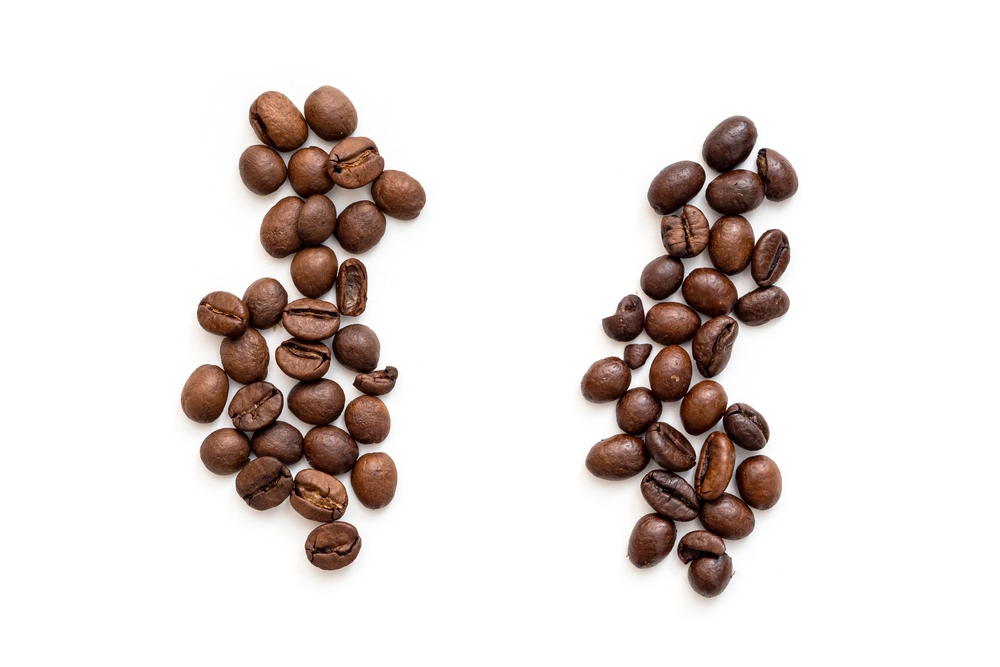
While espresso beans do tend to make far more potent drinks per ounce, you’re not supposed to fill a cup up with espresso. You may only get a 1-ounce shot in your espresso drink, and the rest is just cream.
On the other hand, coffee is often served in much larger quantities. A cup of coffee is considered to be 4 ounces, which makes it just slightly less caffeinated than one shot of espresso, but most people either don’t stop at one cup of coffee, or they fill much larger cups with coffee. It’s not abnormal to fill a 16-ounce cup with hot coffee and drink it within an hour.
Because of this, drinks made with coffee beans often deliver far more caffeine than drinks made with espresso.
Furthermore, drinking larger quantities of espresso isn’t recommended. It’s easy to slam back 6 shots of espresso over a few minutes or so without recognizing the effects of such a high caffeine content until it’s too late.
Espresso beans don’t make drinks that you casually sip on throughout the day in large quantities.
The Taste of Espresso Beans vs Coffee Beans
As you’re probably starting to tell, the common theme is that espresso beans have a more noticeable complexity and potency in comparison to coffee beans. That translates to their flavor differences, too.
The longer roasting process, more substantial release of essential oils and compounds, and the trademark fine grind of espresso beans adds a lot of complexity and boldness to espresso beans. The flavors are more pure and in-your-face than anything you’re getting out of even the most premium coffees, and they’re more complex overall. From flowery notes mixed with hints of dark chocolate and the bold bitterness, there’s a lot going on in espresso beans.
Coffee beans can have those complex flavors when you purchase a quality product, but they’re not as front-and-center as they are in espresso. It takes a keen palette and a love of coffee to sit down and pick those notes apart. This is both a pro and a con. Of course, coffee can be extremely bold. There are entire brands built around that type of coffee. However, even the boldest coffees aren’t as powerful as espresso beans. There’s more nuance to their flavor profiles. This can be a letdown if you want the boldest, most intense coffee flavor, but it also makes coffee much more enjoyable for casual, everyday use. It’s much easier to enjoy a cup or two, or even three, of coffee throughout the day than it is to drink several espressos.
The Uses of Espresso Beans vs Coffee Beans
The types of drinks and other recipes espresso beans and coffee beans are used for are also quite different. As you can see, coffee is far more flexible, leading to more varied uses. That doesn’t mean espresso doesn’t have a few tricks up its sleeve, though.
Standard Drinks Compared
A standard cup of coffee is served in a 4-ounce cup. However, those making it at home or picking up a cheap cup from their local donate shop often drink twice as much in a single sitting. This is usually mixed with sugar and creamer, and there’s nothing too fancy about it.
In comparison, a similar quality espresso is usually just that: A shot of espresso. It comes in a tiny 1 or 2-ounce cup, and it goes down quickly for a jolt of caffeinated pleasure.
If anything is added to a standard espresso, it’s usually layers of cream on top of a shot or two.
Different Brews
Espresso typically isn’t cold brewed, though it can be served in some cold desserts. Espresso can be brewed with various methods such as drip-brewing and pour-over brewing, though. Since the major draw of espresso is its potency and complexity, pour-over methods have become extremely popular despite not being as convenient. This gives the barista, or even you, far more control over the quality of the end product.
In comparison, coffee can be brewed with an electric drip brewer, using the pour-over method, or cold brewed; each has its own distinct characteristics besides the differences presented by different bean varieties.
Special Uses
Espresso beans, ground or not, are used in a variety of special recipes. Brewed espresso is traditionally added to a scoop of vanilla espresso, and chocolate-covered espresso beans are a delicious treat. However, it’s not added to as many recipes as coffee beans because of the extremely bold flavors that overwhelm certain dishes.
On the other hand, coffee is frequently mixed into everything from sugary dessert-style drinks to various cakes, puddings, chocolates, and yes, even alcoholic cocktails. This is because, while it can be potent and flavorful, it’s not overpowering and larger amounts can be used.
Espresso Beans vs Coffee Beans: The Final Verdict
As you can see, there are a lot of differences between espresso beans and coffee beans. It’s a more complex issue than which one has more caffeine.
However, this doesn’t mean one is better than the other. They each serve their own purpose, and they’re both great for different occasions.
If you want to pit espresso beans vs coffee beans on your own and see the difference for yourself, head over to 205 Degrees and pick up some premium organic espresso and coffee at an unbelievable value.

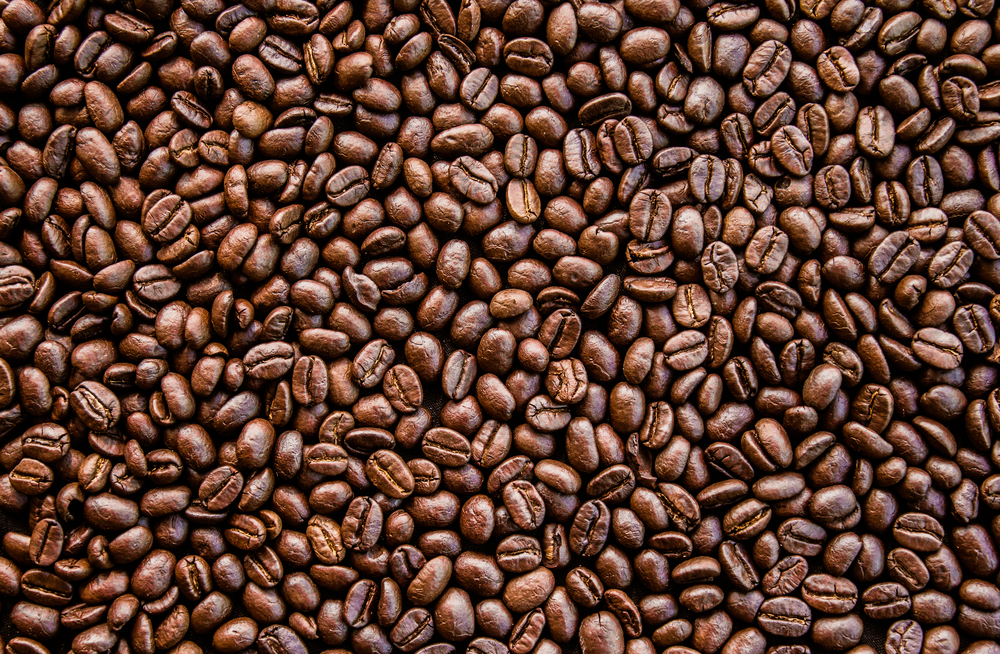
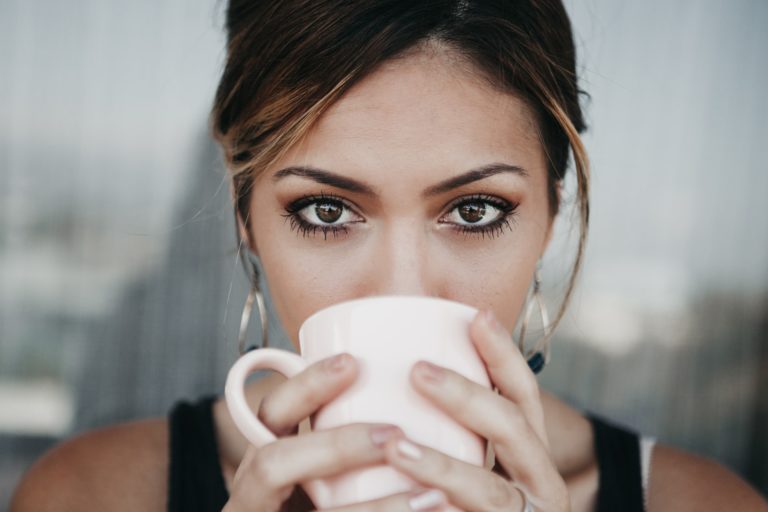
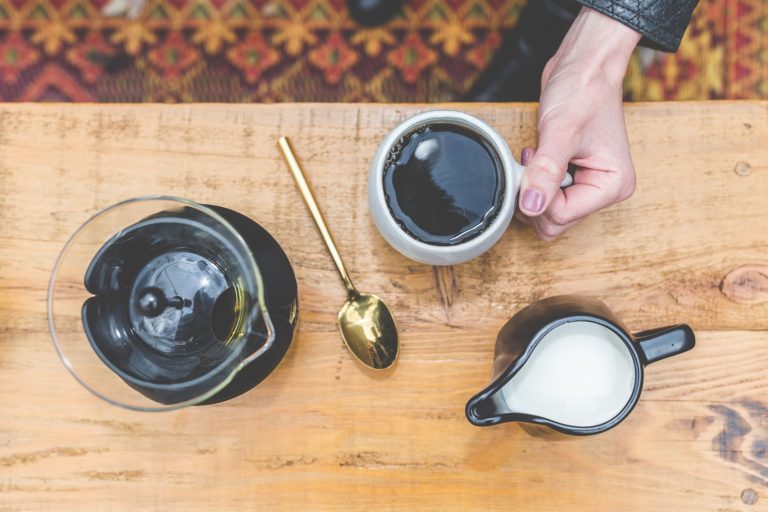
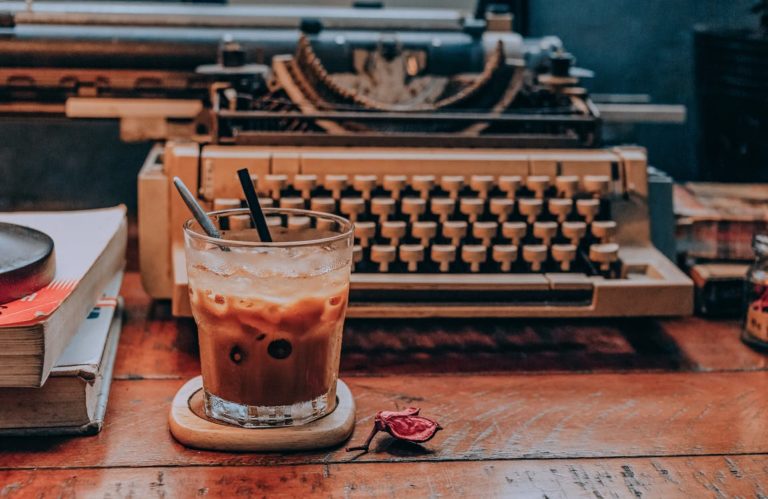

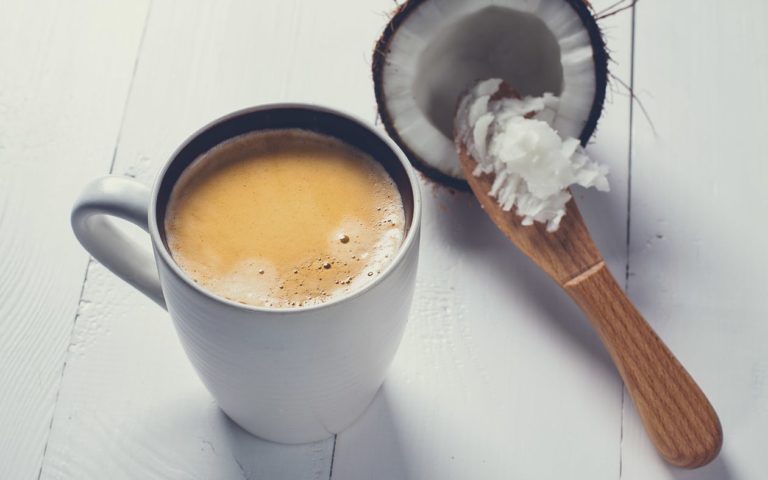
![What Is Cortado Coffee? [Ultimate 2022 Guide For Beginners] What Is Cortado Coffee? [Ultimate 2022 Guide For Beginners]](https://205degrees.com/wp-content/uploads/2021/12/cortado-coffee-768x636.jpg)